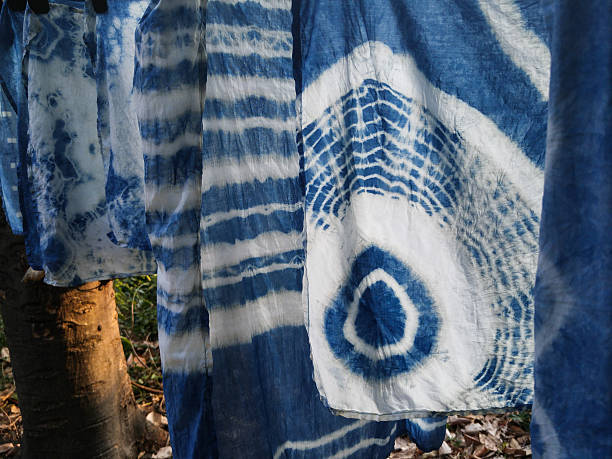Embracing Shibori: The Artful Resurgence of Japanese Tie-Dye
In a world increasingly drawn to artisanal craftsmanship and unique aesthetics, Shibori, the ancient Japanese tie-dye technique, is experiencing a remarkable revival in contemporary fashion. This centuries-old art form is captivating designers and fashion enthusiasts alike, offering a fresh perspective on textile manipulation and personal expression through clothing.

Traditionally, Shibori artists used indigo dye, creating stunning blue and white designs. The process was labor-intensive, requiring skill and patience to achieve the desired effects. Different regions in Japan developed their unique Shibori styles, each with distinctive patterns and techniques.
Shibori’s Modern Metamorphosis
Today, Shibori has transcended its traditional roots to become a versatile technique embraced by both high-end designers and independent artisans. Modern interpretations of Shibori incorporate a wider range of colors and fabrics, expanding its aesthetic possibilities.
Contemporary designers are experimenting with Shibori on silk, linen, and even synthetic materials, creating everything from ethereal evening gowns to casual streetwear. The technique’s ability to produce one-of-a-kind pieces aligns perfectly with the current demand for individuality in fashion.
The Appeal of Artisanal Imperfection
In an era of mass production, Shibori represents a return to handcrafted authenticity. Each piece bears the subtle marks of its creation, telling a story of artistic intention and skilled execution. This celebration of imperfection resonates with consumers seeking clothing with character and depth.
The organic patterns and subtle variations in Shibori-dyed fabrics create a visual intrigue that machine-made prints simply cannot replicate. This artisanal quality adds a layer of sophistication to garments, elevating even simple silhouettes to statement pieces.
Shibori in High Fashion
Luxury fashion houses have taken notice of Shibori’s potential, incorporating the technique into their collections. Designers like Issey Miyake and Proenza Schouler have featured Shibori-inspired pieces on the runway, showcasing its versatility in creating both structured and fluid silhouettes.
The technique’s ability to create depth and movement in fabric has made it particularly popular for evening wear and resort collections. Shibori-dyed gowns and flowing dresses offer a fresh alternative to traditional prints, allowing for a play of light and shadow that adds drama to any ensemble.
Accessible Artistry: Shibori in Ready-to-Wear
While Shibori has made waves in high fashion, it’s also finding its way into more accessible ready-to-wear collections. Brands are offering Shibori-inspired pieces that capture the essence of the technique without the high price tag of handcrafted items.
This democratization of Shibori allows a broader audience to experience its beauty. From tie-front blouses to summer dresses, these pieces bring a touch of artisanal elegance to everyday wardrobes, appealing to those who appreciate craftsmanship but may not have the budget for luxury items.
Styling Shibori for Contemporary Wardrobes
Incorporating Shibori into modern outfits requires a balance between showcasing the artistry of the fabric and creating a cohesive look. Here are some styling tips to make the most of Shibori pieces:
-
Pair a Shibori-dyed top with solid-colored bottoms to let the pattern take center stage
-
Layer a Shibori jacket over a monochromatic outfit for a pop of artistic flair
-
Accessorize Shibori dresses with minimal jewelry to avoid competing with the fabric’s intricate patterns
-
Mix Shibori pieces with other textures like leather or denim for an eclectic, modern look
-
Use Shibori accessories like scarves or bags to add a subtle artistic touch to simple outfits
Shibori: A Sustainable Fashion Choice
• Shibori’s revival aligns with the growing interest in sustainable fashion practices
• The technique often uses natural dyes and promotes slow, mindful production
• Shibori pieces are typically made to last, countering the fast fashion trend
• By supporting Shibori artisans, consumers contribute to preserving traditional craftsmanship
• The unique nature of Shibori encourages a more thoughtful, curated wardrobe
As fashion continues to evolve, Shibori stands out as a technique that bridges past and present, offering a unique blend of tradition and innovation. Its resurgence in contemporary fashion not only celebrates the artistry of textile manipulation but also provides a refreshing antidote to mass-produced clothing. By embracing Shibori, fashion enthusiasts can add depth, character, and a touch of handcrafted elegance to their wardrobes, participating in a global appreciation for this timeless Japanese art form.





